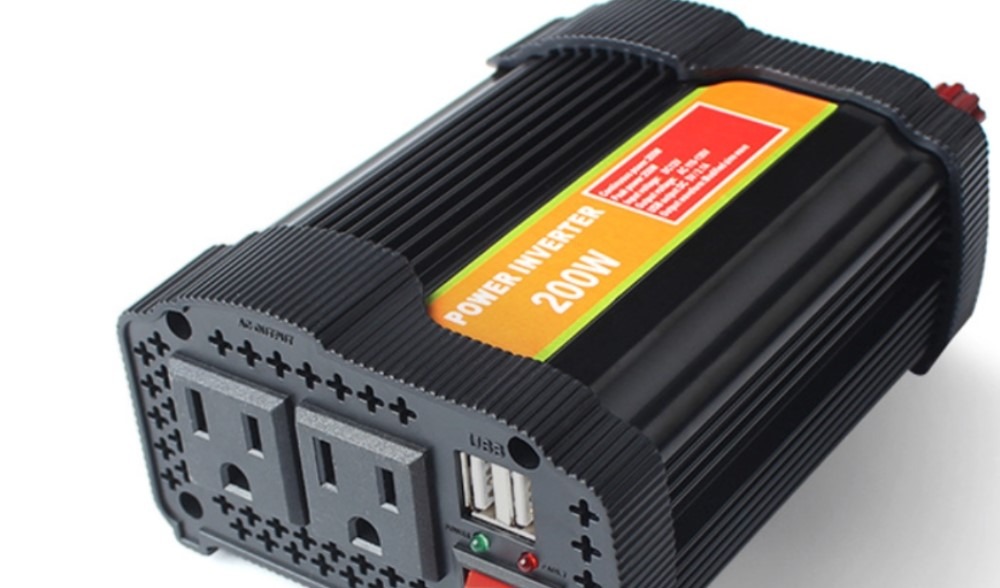An inverter is an electronic device that converts DC to AC. It takes the direct current (DC) from a battery and converts it into alternating current (AC) which can be used to power devices such as televisions, computers and even entire homes. There are many different types of inverters on the market, each with its own set of functions and features. In this blog post, we will take a look at the different functions of DC to AC power inverters and help you decide which one is best for your needs.
Functions of DC to AC Power Inverter
Let’s assume that the power goes out, and you only have a 12 V car battery on hand. Can you utilize it to keep food from going bad if the electricity goes off? The answer is no, unfortunately, because you’re missing something crucial. You’ll need a device that transforms DC power from the battery into AC power capable of operating the refrigerator’s compressor.

It’s easy to convert AC current into DC; all you need is a diode, which only allows one-way flow of electricity. Converting DC to AC is more difficult because you’ll need some sort of oscillator that reverses the current direction at the desired frequency. Most inverters rely on resistors, capacitors, transistors, and other circuit components to accomplish this task.
A step-up transformer is also required, as well as something else: a method to change the voltage of the current source for usage by the device that will be using it. To put it another way, it requires a transformer. If you’re using a 12 V battery to power a 120 V refrigerator, for example, an inverter needs a 10X step-up transformer that boosts the voltage by ten times. Because it only works with AC electricity, the transformer comes after any DC to AC transformers in the circuit.
What is AC/DC Current?
The majority of us learn about DC electricity in school, and the easiest way to visualize it is to imagine a battery. Much like ants following one another as they forage, electrons flow from the negative terminal to the positive one if you connect the battery terminals with conducting wire.
When a load, such as a light, is inserted in the circuit, the electrons race through it and do work on their way to the positive terminal. In the case of a light bulb, the job is to heat the filament so that it glows.
Instead of flowing in one direction, alternating current reverses directions many times per second as a result of how it’s generated. An AC generator transforms kinetic energy into electrical energy by means of electromagnetic induction, which is the transfer of electricity via a changing magnetic field. The rotor is of the permanent magnet type in this variation, and as it turns, a current is produced in the coil that reverses direction with each half spin.
AC current does not flow through the wire in the same way that DC current does. The best way to visualize it is as if the electrons in the wire are dancing in place. During the first half-spin of the rotor, electrons move one way and during the second half spin, they move the other way.

Features of DC to AC Power Inverter
An inverter converts direct current (battery, storage battery) into a fixed frequency and constant voltage or voltage regulation AC power. It’s made up of an inverter bridge, control logic, and filter circuit.
A power inverter transforms DC power from a battery into standard AC power that you can use to operate all sorts of devices, including electric lights, kitchen equipment, microwaves, power tools, TVs, radios, and computers. Simply connect the inverter to a battery and your AC gadgets to the inverter … and you’ve got portable electricity on hand whenever and wherever you need it.
The DC supply is much more constant and positive in this situation, thanks to which the AC oscillates about a 0V base stage, usually in a sine or square or frequency.
Solar inverters are very useful if you’re constructing a solar power system because they transform energy from the sun into usable electricity for your gadgets inside your car. This is non-polluting, long-term renewable energy that isn’t stored in your best car battery.
DC to AC power inverter isn’t only for automobiles; they’re also great for small properties or outhouses.
Many (but not all) power inverters have USB ports, which allow you to charge your devices on the road without having to bring adaptors and big adapters. For simplicity of operation, get one that works with USB.
Conclusion
A DC to AC power inverter is a device that converts direct current (DC) into alternating current (AC). This allows you to use devices that require AC power, such as appliances and electronics, while your vehicle or other DC-powered device is running. There are many different types of DC to AC power inverters available on the market, so it’s important to do your research before purchasing one in order to find the best option for your needs. We hope this article has helped you understand the basics of DC to AC power inverters.
Recommended Product: 200W 12V to 110V Car Inverter
